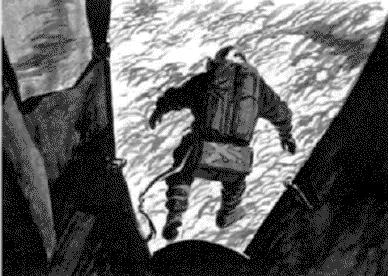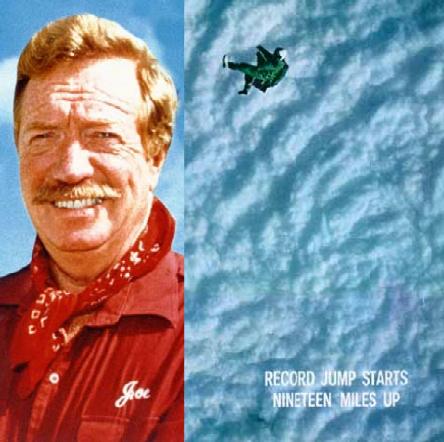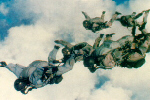


|

|
| The military puts out routinely para troopers at very low altitudes of less than 1000 feet for large scale deployment. However, special forces, such as Navyseals jump at high altitudes around 30'000 feet for secret infiltration of enemy territory. The military jargon for these jumps is HAHO if the jumper opens right after exit and glides uder canopy to his destination and HALO if most of the descend is done in freefall. |
   "tactical grouping" in freefall |

Photo: Mike Ince (M. Talyak at 30,000 ft.) |
With strong turbine aircrafts
being broadly available nowadays,
high altitude jumps becoms quite popular in modern
civilian sport parachuting . While exit altitudes for
regular skydives without additional oxygen are made from
around 13'000 feet, normal sport HALO jumps are made from
altitudes between 20'000 and 30'000 feet. Safety regulations for these jumps have been developed by the United States Parachute Association, see Skydiver Information Manual 9-5 , for charts containing valuable information on high altitude jumping. A great collection of kewl pictures and facts can be found on Mike Wright's 30Kft-Page , with every detail about high altitude jumps at Skydance near Davis, CA. Like any special jump, high altitude jumps require an S&TA-briefing, read for this Tad Smith (SkyDance) on High Altidue Jumps . |
The one important additional risk of high
altitude jumps is Hypoxia , i.e.,
the physiological effects of insufficient
oxygen supply. But also pressure difference
and very low temperatures can have adverse
and possibly disastrous effects on the
capacities and consciousness
of the high altitude jumper, if no adequate
precautions are taken. Here a few more random links
about this ...
|

|